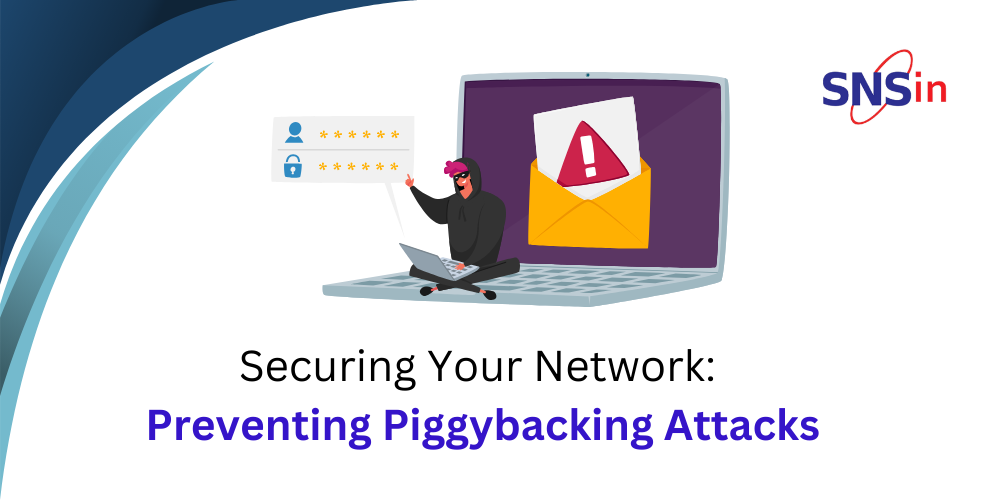Network security is critical in today’s digital world. As cyber threats evolve, organizations need preventive measures like data protection.
This blog explores Piggybacking attacks, how they work, & how to prevent them to protect network and data privacy.
Understanding Piggybacking Attacks
Piggybacking (tailgating) allows unauthorized access by following someone with valid entry.
On network part, it means unauthorized users exploit loopholes or stolen credentials to sneak onto a network.
How Piggybacking Attacks Work?
Cybercriminals gain access by blending in with authorized users or exploiting networks. This includes tailgating, social engineering, and exploiting Wi-Fi vulnerabilities.
Preventing Piggybacking Attacks
To prevent piggybacking attacks, a robust strategy with physical security, user education & strong network norms is essential.
Here are some effective strategies for preventing piggybacking attacks:
Implementing Access Control Measures
Limit access to critical areas with key cards, biometrics, or PIN codes. Grant entry only to authorized personnel & review access permissions.
Cyber Educate Employees
Train employees to resist social engineering and follow security procedures in restricted areas. Encourage them to report suspicious activity.
Strengthen Physical Security
Secure entry points with cameras, security personnel, and physical barriers (turnstiles, gates). Monitoring access with cameras and systems to deter and detect unauthorized entry.
Secure Wireless Networks
Strengthen Wi-Fi security:
- Use strong encryption (WPA2/WPA3) & update passwords/keys often.
- Implement network segmentation to isolate sensitive data and devices.
Conduct Regular Security Audits
Regularly conduct security audits and penetration testing to identify and fix vulnerabilities in your physical and network security that could be exploited by piggybacking attackers.
Enforce Strict Authentication Practices
Add MFA (multi-factor authentication) for high-sensitivity systems. It needs extra verification beyond passwords, making it harder for attackers to exploit stolen credentials.
Conclusion
Piggybacking lets unauthorized users sneak into secure areas or networks. Combine physical security (access control, security personnel), employee training (social engineering awareness), & strong network security (encryption, segmentation, MFA).
Limit access to critical areas (key cards, biometrics, PIN codes). Secure entry points (cameras, personnel, barriers). Teach employees to resist social engineering. Train them on proper security procedures. Encourage reporting suspicious activity. Strengthen Wi-Fi (WPA2/WPA3 encryption, update passwords). Segment your network to isolate sensitive data. Conduct regular security audits and penetration testing. Implement MFA for high-sensitivity systems.
Secure Network Solutions (SNS) offers comprehensive security solutions to protect your organization from cyber threats. Contact us today by email via [email protected]
Swathi
Author
Working IT professional and a Cyber Security enthusiast. Passionate to write about Cyber Security topics and Solutions. I share my insights as I study articles and trending topics in the field of Cyber Security.
![]()




